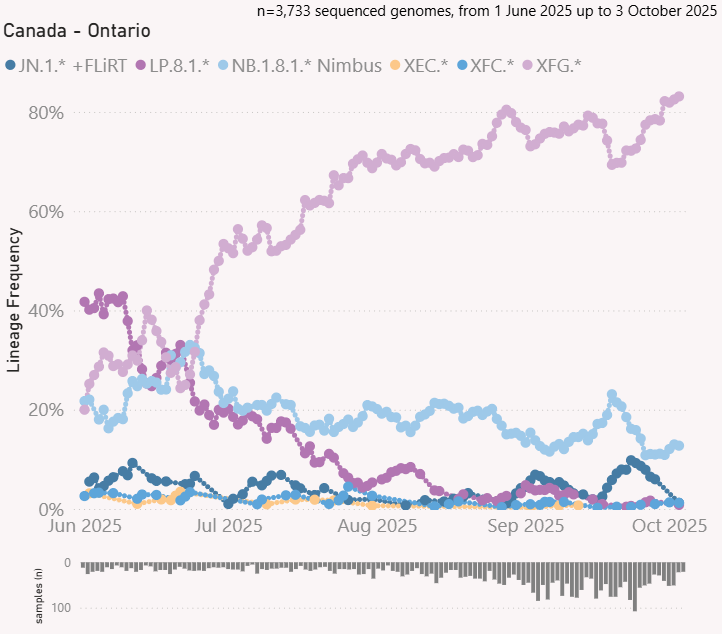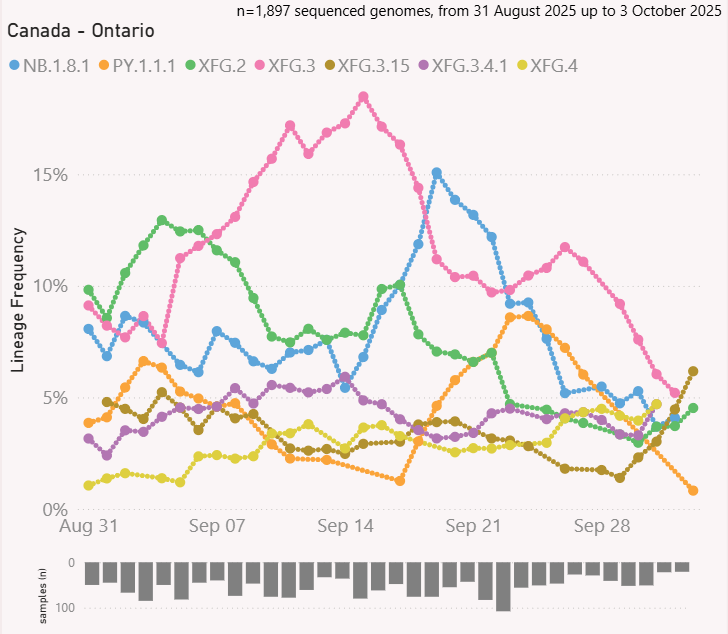Warning: Ultrasonic Humidifiers with Tap Water Generate lots of PM2.5 Pollution
Since we are in winter and humidity levels are much lower this time of year, I wanted to provide this warning after a recent experience of a colleague of mine.🧵1/
Since we are in winter and humidity levels are much lower this time of year, I wanted to provide this warning after a recent experience of a colleague of mine.🧵1/

It is amazing what you can discover about your environment when you actually monitor it. My colleague recently purchased a particulate matter (PM) monitor for his home & after multiple days of nothing he saw massive spikes in PM2.5 levels every night for three nights in a row. 2/
The PM2.5 levels exceeded 150 ug/m3 the first night and over 200 ug/m3 the next two nights. While no level of PM2.5 is safe, the WHO warns of exposure to levels above 5 ug/m3 annually and 15 ug/m3 in a 24 hour period ( ). 3/ who.int/news-room/fact…


He was able to track down the source to an ultrasonic humidifier that had been filled with tap water to make humidity levels more comfortable in a bedroom. 4/
The PM monitor was actually in a different part of the house and he measured 3x higher levels in the room where the ultrasonic humidifier was operating. 5/
What happened? “Ultrasonic humidifiers generate humidity by breaking water into small droplets using a piezoelectric transducer, a device that vibrates very fast at the ultrasonic frequency." ( ). 6/ualberta.ca/science/news/2…
“These small water droplets are then sent into the air by a fan. That is the mist that we can see coming out of the humidifier." 7/
"Once released in the air, water evaporates quickly into the surrounding air, but the minerals and salts dissolved in tap water are left behind in the air as suspended PM.” 8/
The PM was not confined to the bedroom but spread all throughout his house where it was being breathed in by all family members. 9/
A study confirmed that using distilled water purchased from local grocery stores in ultrasonic humidifiers generated no PM pollution ( ). 10/onlinelibrary.wiley.com/doi/abs/10.111…
@threadreaderapp please unroll
It is important to note that PM generation happens with ultrasonic humidifiers but you can use tap water with evaporative, wick-based humidifiers which does not break up the water molecules in the same way. 11/
Thankfully he had a PM monitor and noticed there was something wrong so he was able to identify and correct the issue. 12/
Why bother using distilled water, what would be the impact if he just kept using the much cheaper tap water and breathing in high levels of PM every night? 13/
Berkeley calculated that exposure for every 22 ug/m3 of PM2.5 for 24 hours is equivalent to smoking 1 cigarette so if they kept using tap water for their humidifier it would be like smoking about 9 cigarettes every night for them ( ). 14/
https://twitter.com/jeffgilchrist/status/1672979111659151361
I used a Model E PM monitor to measure how much outside PM pollution I was letting inside the house by opening a window and also how much frying an egg generates ( ). 15/co2.click
https://twitter.com/jeffgilchrist/status/1648452264351383561
Cooking can also cause high levels of PM so please ensure good ventilation by turning on your range hood fan or opening a windows if possible and HEPA filtration/CR boxes help too ( ). 16/
https://twitter.com/jeffgilchrist/status/1607380659005231106
You can read more about the importance of indoor air quality here ( ). 17/
https://twitter.com/jeffgilchrist/status/1607379781892575234
Much of the PM we breathe in, even while indoors, comes from outdoor origin so it is also important to monitor outdoor PM air quality ( ). 18/
https://twitter.com/jeffgilchrist/status/1741256242650034472
Many people have asked if carbon water filters help. People would need to measure & confirm their filter but most only remove some minerals/metal but not all so could potentially reduce PM levels but wouldn't eliminate ( ). 19/mytapscore.com/en-ca/blogs/ti…
Are the contents of water dangerous? Besides minerals there are metals commonly found in drinking water such as arsenic, copper, lead, iron, nickel, cadmium ( ) and ( ). 20/lakecountyil.gov/DocumentCenter…
mytapscore.com/en-ca/blogs/ti…
mytapscore.com/en-ca/blogs/ti…
Since PM2.5 particles of any type are so small, "PM2.5 can pass through the lung–gas–blood barrier and the 'gut–microbial–brain' axis to cause systemic oxidative stress and inflammation, or directly enter brain tissue via the olfactory nerve" ( ). 21/ncbi.nlm.nih.gov/pmc/articles/P…
This could impact your body differently than just drinking the water with the same content that is normally safe to drink. 22/
“These particles are so small that they can evade our filtration system in the upper airway and penetrate deep into our respiratory tract,” explained Lau. “Upon doing so, they also send chemical species associated with them into our bodies." ( ) 23/ualberta.ca/science/news/2…
People are also asking which PM monitors I use? I have been using air quality monitors by @IndianaTux, a Canadian company. The Model E, G, and X offer PM sensors in them. 24/co2.click
Their Model E and G are indoor monitors that measure PM and their X is an outdoor monitor for PM. The feature I like the best is that they can take measurements every minute and upload the data via WiFi so you can see what is going on in your space over time. 25/ 

If you are interested in learning more, this thread shows some examples of how their Model X and E work and what their online portal looks like ( … ). Model G uses the same PM sensor as Model E-Lite but uses a non-colour display and is cheaper. 26/
https://twitter.com/jeffgilchrist/status/1741252968752578700
As for more affordable options, I cannot vouch for how accurate they are or how well they work since I have never used them but IKEA sells couple of lower cost options ranging from $13 to $50 which do not have the data saved online ( ). 27/ikea.com/ca/en/cat/air-…
The $50 IKEA Vindstyrka Indoor Air Quality Monitor has been reviewed here ( ). 28/breathesafeair.com/ikea-vindstyrk…
The $13 IKEA Vindriktning Air Quality Monitor has been reviewed here ( ). 29/breathesafeair.com/ikea-vindriktn…
Some people have asked if boiling water will "purify" the water to remove minerals. Boiling water may kill bacteria but it will not remove the mineral content and may make it even more concentrated afterwards ( ). 30/mytapscore.com/en-ca/blogs/ti…
Does the PM from tap water in ultrasonic humidifiers impact people differently than outdoor PM pollution? This study takes a looks at what happens in the lungs of mice using different types of water ( ). 31/
https://twitter.com/jeffgilchrist/status/1754508101556813890
@SaltyPeach51 Their Model E and G are indoor monitors that measure PM and their X is an outdoor monitor for PM. The feature I like the best is that they can take measurements every minute and upload the data via WiFi so you can see what is going on in the space over time. 

@SaltyPeach51 If you are interested in learning more, this thread shows some examples of how their Model X and E work and what their online portal looks like ( ). Model G uses the same PM sensor as Model E-Lite but uses a non-colour display and is cheaper.
https://twitter.com/jeffgilchrist/status/1741252968752578700
@SaltyPeach51 I cannot vouch for how accurate they are or how well they work since I have never used them but IKEA sells couple of lower cost options ranging from $13 to $50 which do not have the data saved online ( ).ikea.com/ca/en/cat/air-…
@SaltyPeach51 The $50 IKEA Vindstyrka Indoor Air Quality Monitor Review ( ).breathesafeair.com/ikea-vindstyrk…
@SaltyPeach51 The $13 IKEA Vindriktning Air Quality Monitor Review ( ).breathesafeair.com/ikea-vindriktn…
@spittykitty543 Since the particles are so small, "PM2.5 can pass through the lung–gas–blood barrier and the 'gut–microbial–brain' axis to cause systemic oxidative stress and inflammation, or directly enter brain tissue via the olfactory nerve" ( ). 2/ncbi.nlm.nih.gov/pmc/articles/P…
@spittykitty543 “These particles are so small that they can evade our filtration system in the upper airway and penetrate deep into our respiratory tract,” explained Lau. “Upon doing so, they also send chemical species associated with them into our bodies." ( ) 3/ualberta.ca/science/news/2…
• • •
Missing some Tweet in this thread? You can try to
force a refresh

















